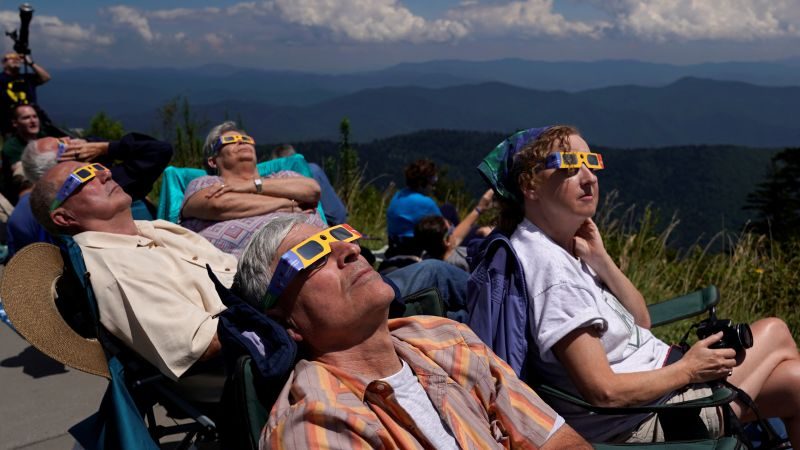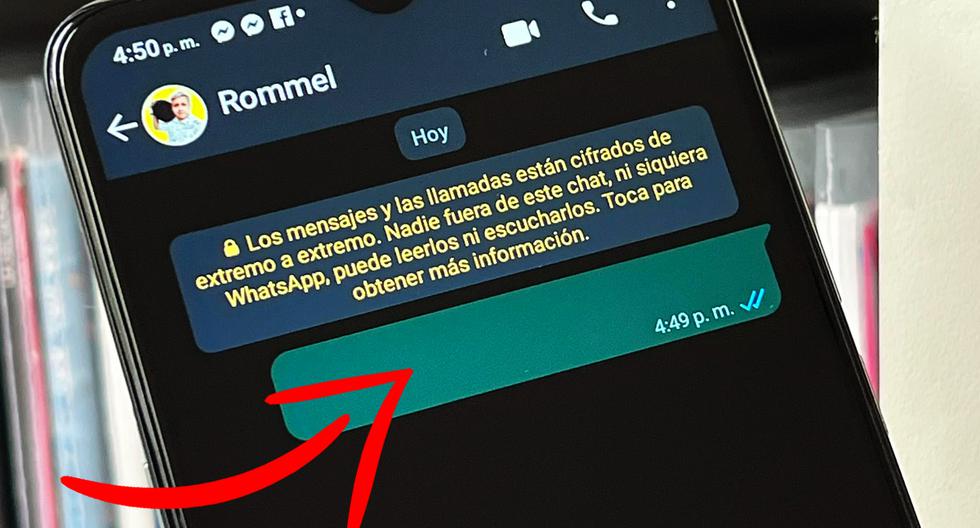(CNN) — This Saturday, an annual solar eclipse will create a spectacular “ring of fire” in the sky across the continental United States.
Astronomers are encouraging everyone in the eclipse path, which is 201 kilometers wide and stretches across North, Central and South America, to enjoy this rare sight one last time until 2046. Sunglasses may not be enough to protect your eyes during this celestial event.
The nickname “Ring of Fire” comes from the appearance of annular solar eclipses. They are similar to total solar eclipses, except that the Moon is far enough from Earth in its orbit that it cannot completely block the Sun, but instead, the Sun’s fiery light surrounds the Moon’s shadow, a so-called ring of fire.
Weather permitting, a crescent-shaped partial solar eclipse in which the Moon covers only part of the Sun will be visible from 49 American continents, including Alaska, according to NASA.
Regardless of whether your location allows you to see an annular or partial solar eclipse, some of the Sun’s powerful light will always be visible. It is not only uncomfortable but dangerous to look at the brightness of the sun with the naked eye.
Why not watch the eclipse directly?
According to PotIt is only safe to look at the Sun without eye protection during a total solar eclipse or during the brief moments when the Moon completely blocks the Sun’s light. A total solar eclipse will pass over the northern United States on April 8, 2024.
“There are different types of eclipses, which means there are different types of protections you need to pay attention to,” said Dr. Gary Black, a National Science Foundation program officer at the National Solar Observatory. “During an annular eclipse, the Sun’s surface is not completely covered, so glasses or indirect viewing must be worn at all times.”
Direct exposure to the sun can cause blindness or visual disturbances. During the 2017 total solar eclipse, a young woman was diagnosed with solar retinopathy after seeing the eclipse in what doctors believed to be eclipse glasses, damaging the retina in both eyes from solar radiation.
There is no cure for solar retinopathy. It can be good or bad, but it is a permanent condition.
Use of eclipse glasses and solar observers
To view the annular eclipse, use Certified eclipse glasses Or use a portable sun visor. On the other hand, you can observe the Sun with a telescope, binoculars, or a camera with a special solar filter on the front, which works much like eclipse glasses do.
“You need certified solar eclipse glasses that meet ISO 12312-2. There are a lot of secure vendors online,” said Alex Lockwood, director of strategic content and integration in the Science Operations Directorate at NASA Headquarters. “We can’t stress enough how important it is to get a pair of certified, safe solar eclipse glasses to view this annual event.”
A woman uses special glasses to look at the sun. (Justin Sullivan/Getty Images)
Sunglasses are not a substitute for eclipse glasses or sun visors that are 100,000 times darker and meet international safety standards.
The lenses of solar eclipse glasses are made of a black polymer or resin containing carbon particles that block almost all visible, infrared, and ultraviolet light. Planetary association. Sunglasses do not block infrared radiation.
For safe manufacturers and resellers of eclipse glasses and filters for optical devices, including cameras and smartphones, see a curated list American Astronomical Society.
Put on your eclipse glasses before looking up, and don’t forget to stop looking at the Sun before taking them off again. Always be careful not to remove children’s eclipse glasses when looking at the sun.
If you normally wear glasses, put them on and put on eclipse glasses or hold a handheld viewer in front of them, according to the American Astronomical Society.
According to NASA, when using eclipse glasses or a small solar viewer, do not look at the Sun through an unfiltered optical device (camera lens, telescope, binoculars). The sun’s rays can still shine through the filter of your glasses or mask, no matter how concentrated they are through the optical device, and can cause serious eye damage.
It is also possible to use solder filters to view the eclipse safely, as the international safety standard derives in part from the use of such filters for viewing the Sun.
Welding filters are smooth glass or metal-coated polycarbonate and a shade number of 12 or higher allows for safe viewing, but shades of 13 or 14 are considered ideal and similar to wearing eclipse glasses by the US Astronomical Union. Society. Be aware that the sun appears green instead of yellowish orange or white. These filters are not usually found on supply store shelves, but may be available online.
Adjustable or self-darkening welding helmets are not recommended because they do not darken quickly enough to see the sun.
Prepare for the next eclipse
As long as the eclipse glasses or solar viewers you use meet ISO 12312-2 safety standards and are not broken, scratched or damaged, they will not “expire” and can be used indefinitely. Plus, there’s no limit to how long you can watch the sun while wearing them.
Some glasses and scopes have outdated warnings about wearing the glasses for more than three minutes at a time or recommend throwing them away after three years, but these are not suitable for ISO 12312-2 certified scopes, according to the American Astronomical Society. .
Store your glasses and masks for April’s total solar eclipse, keeping them at room temperature in an envelope or in their original packaging to avoid scratches.
Never use water, glass cleaner, baby wipes, or other wet wipes to clean eclipse glasses; Moisture can separate cardboard frames from lenses. Instead, carefully wipe the lenses with a cloth or cloth.
An indirect view of the eclipse
If you don’t have certified glasses, you can view eclipses indirectly. Pinhole projector, like a hole punched in a chip. These work when you hold the card while looking at the sun. This aperture projects a crescent or ring-shaped image of the Sun onto the ground or other surfaces.
But don’t look at the sun or look directly through the aperture.
Other pinhole projectors you may already have on hand include strainers, straw hats, or anything with small holes. Or you can simply raise your hands, spread your fingers and cross them to make a waffle shape. The small space in between may represent the Sun’s crescent during a partial eclipse or the ring of fire during an annular eclipse.
Standing next to a leafy tree? The small spaces between the leaves reflect the ecliptic phase patterns on the ground.





